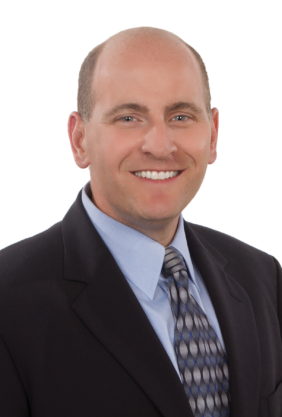Company: MDbackline
Clinical Practices: Harvard Eye Associates, Laguna Hills, California, and Jules Stein Eye Institute, University of California, Los Angeles
Claim to Fame: Successfully navigating an exit from a company after 10 years of persistence
Dr. Hovanesian discusses developing MDbackline and the importance of industry partnerships.

CRST: What prompted you to get involved with developing a technology to improve physician contact with patients?
John A. Hovanesian, MD: I observed that the primary outcome measure for many treatments is one that only patients can report. For example, we can measure their refractive errors and visual acuity after premium IOL implantation, but their opinions on the outcomes are more important.
It also became clear early in the history of premium IOLs that problems with doctor-patient communication were negatively affecting the adoption of these lenses. MDbackline was developed as an electronic means of educating patients and assessing their level of interest to increase their access to technology and improve follow-up.
CRST: Once the software had been developed, how did you market it?
Dr. Hovanesian: The first step was to see where and how it worked. We put the software to use in my practice, but to avoid bias I asked colleagues to try it as well. I knew that for the software to be successful, it would have to work for small and large practices.
Once my coworkers at MDbackline and I confirmed that the software could enhance the practice, we began offering it to more people. Of course, we started with the individuals we knew best.
We never hired a big marketing firm. Instead, we spoke at meetings and published articles in the trade press, including in CRST.
CRST: As the company gained momentum, how did you expand its scope and integrate new features?
Dr. Hovanesian: One of the most important things for any company is to focus on customers and identify what they want. Even if you are your own customer, as in my case, it is important to recognize your own biases. I used my preferences as a guide but prioritized listening to customers. That helped us determine which features were most useful.
CRST: How important is industry partnership for surgeons who are interested in starting their own businesses?
Dr. Hovanesian: It’s crucial. I think doctors often feel suspicious of industry and think their motivation is strictly to sell more product and make money off us. It is a them-versus-us mindset. As I got to know people in the industry, I discovered that it’s them and us together and that their motivation is to come up with better treatments. They genuinely want feedback.
CRST: What advice do you have for entrepreneurs who are seeking financial backing and industry support?
Dr. Hovanesian: Be aware of your product’s shortcomings from the customer’s and industry’s perspectives. Listen to outsiders. My mother used to say, “It takes somebody who really loves you to tell you your breath stinks.” You need to hear if your product is not what anyone wants. It allows you to develop a better solution for your customer and potential industry partner.
CRST: You had a successful exit from MDbackline after 10 years. Why did you take that step, and what did the process look like?
Dr. Hovanesian: It is good to start a company with the end in mind, asking yourself what your objectives are. At the outset, I asked myself if I wanted to run a software company for the rest of my career or just grow it and hand it off. As a company founder, it is important to know when to get out of the way. I realized that, at some point, I would need a partner for MDbackline to reach its full potential.
It became apparent that MDbackline could increase the number of patients benefitting from premium IOLs, which led primarily IOL manufacturers to become interested in acquiring the software. Ultimately, the company was sold to Alcon. I used my common sense and had some professional representation when necessary to help me avoid pitfalls.
CRST: How did the experience change the way you practice?
Dr. Hovanesian: I learned that some of the best innovations are things we doctors come up with. I also learned that we can change the practice of medicine if we have an idea and a willingness to pursue it. I encourage others who have an idea they feel is too good to pass up to pursue their dreams but be realistic about what it will take. My experience has made me a more valuable board member for companies and a more valuable physician for my patients. I have tools I didn’t have before. I also feel fulfilled because my career has not been about just treating patients but also about creating something a little bigger.
CRST: Which traits are integral to an entrepreneur’s success?
Dr. Hovanesian: Persistence is the most important attribute of a successful entrepreneur. There are times when it seems as though nothing is going to work out and the best thing you could do is pull the plug. You’ve run into nothing but dead ends. Digging back in, redoubling your efforts, and working with the problems is how you find a solution.




